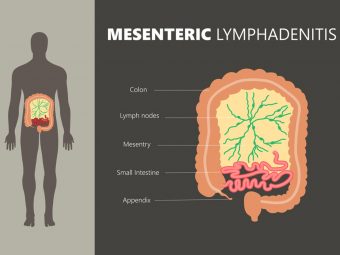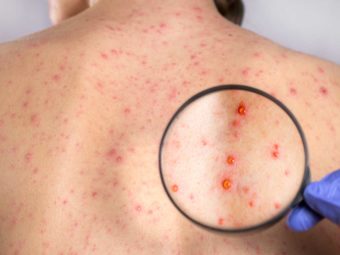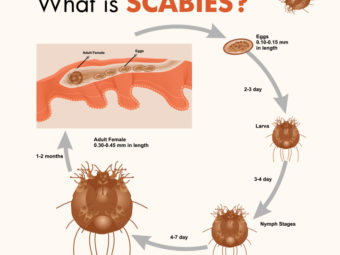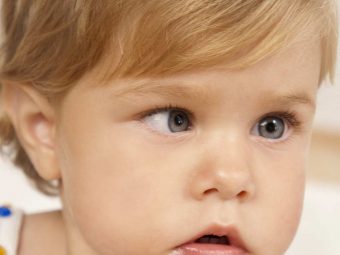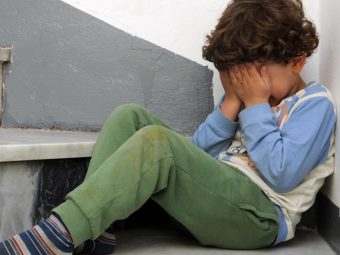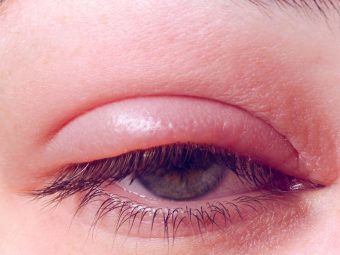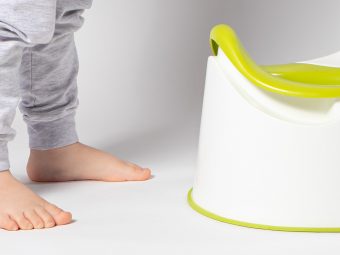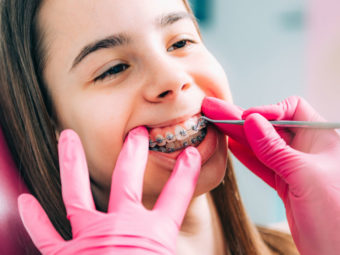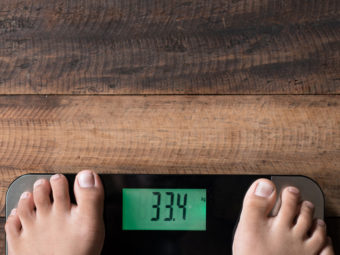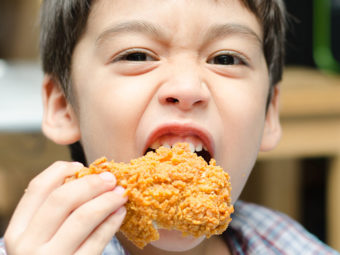
Image: ShutterStock
Fever in children and teens may occur due to various reasons. This is also called febrile response or pyrexia, in which the body temperature increases more than the average temperature between 97°F (36.1°C) and 99°F (37.2°C)(1).Fever indicates that something is going on in the body. A slight rise in body temperature is not a serious concern. Nevertheless, you may seek prompt medical care if the body temperature is above 103°F (39.4°C) since it can be due to illnesses or conditions requiring treatment(2).
Read about the causes, types, diagnosis, associated symptoms, and treatment for fever in children and teens and when to seek medical care.
What Body Temperature Is Considered A Fever In A Teenager
Fever happens when the immune system fights against infectious agents. The temperature is measured using a thermometer.When your teen’s body temperature rises a little, it can be a sign that their body is trying to respond to something that is not regular.
A fever up to 38.9°C (102°F) can be managed with home care. Any temperature above this may be managed with over-the-counter medications as per your doctor’s recommendations. However, if you notice your child is weak or shows any symptoms that are of concern, or if there is a continuous high fever, you may seek medical attention. There are few conditions where low fever can also be a cause for concern.
Types Of Fever In Children And Teens
The duration, types, and patterns of fever are useful to differentiate diseases that cause an increase in body temperature. The types of fever may also indicate the outcome of the disease in some cases.
Based onduration,fever is classified into(3):
- Acute fever:This usually lasts less than a week or seven days and is often associated with infectious diseases.
- Sub-acute fever: This may last up to two weeks and is typically seen in typhoid, and abscesses, among others.
- Chronic fever:This lasts more than two weeks and mostly occurs as a result of chronic infections such as tuberculosis, HIV, and cancers.
An untreated acute fever can often become chronic if it is not self-resolving.
Based on the increase inbody temperature, fever can be classified into(3):
Image: IStock
- Low-grade fever: 38.1°–39°C(100.5–102.2°F)
- Moderate-grade fever:39.1°–40°C (102.2°–104.0°F)
- High-grade fever:40.1°–41.1°C (104.1°–106.0°F)
- Hyperpyrexia: >41.1°C(>106.0°F)
Fever can be of different types based on thepattern of temperature fluctuations,including(3):
- Continuous fever:The temperature remains high for 24 hours, with slight variations and without touching normal. Constant fever often happens in typhoid (stepwise increase), pneumonia, andmeningitisamong others.
- Intermittent fever: It is characterized by high temperature for a few hours, followed by an interval. Sepsis and malaria often follow this pattern. It may vary based on its periodicity, namely quotidian fever (24 hours), tertian fever (48 hours), and quartan fever (72 hours). It is also typical of many viral infections.
- Remittent fever:This is characterized by a high temperature with changes of more than 2°Cin 24 hours. Remittent fever may happen in endocardial infections andbrucellosisiXAn infection caused by Brucella bacteria commonly found in cattle and dogs and leads to brain, heart, liver, and bone damage..
- Pel-Ebstein fever:它被定义为高温大约3 - 10 days, followed by a normal temperature for 3–10 days. The pattern is generally seen inHodgkin's lymphomaiXA cancer of the lymphatic system characterized by swollen lymph nodes and reduced immunity..
 Expert says
Expert says一些疾病,发烧sympt作为突出om are named based on the cause, clinical feature, or the endemic area. These include hay fever, rocky spotted mountain fever, Mediterranean fever, Assam fever,dengue fever, hemorrhagic fever, and yellow fever. These are names of diseases and not types of fever.
Signs And Symptoms Of Fever In Children And Teens
The following symptoms are often associated with fever(4):
- Decreased appetite
- Shivering
- Tiredness
- Increased sensitivity to pain (hyperalgesia)
- Difficulty in concentrating
- Muscle or body aches
- Headache
- Sweating
- Flushed face
Image: Shutterstock
The following symptoms and signs often indicate the cause of fever.
- Ear pain
- Throat pain or sore throat
- Cough
- Abdominal pain
- Diarrhea
- Skin rashes
The above-listed symptoms are commonly associated with fever. However, you may notice other symptoms and signs as well, depending on the conditions. Sometimes, it can be a red-herring. For example, typhoid fever may start with cough orurinary tract infectionstarting with diarrhea.
Causes Of Fever In Children
Fever can be a sign of many medical conditions(5):
- Infectious diseases
- Immunological diseases
- Certain cancers
- Metabolic diseases
- Inflammations
- Medications
- Heatstroke
Sometimes, body temperature can rise without any signs and symptoms of illnesses. It can often be due to emotional factors and physical activities. The following factors may cause an increase in body temperature:
- Stress
Image: Shutterstock
- Clothing
- Food
- Medications
- Exercises
- Menstruation
If the fever occurs more than thrice in three weeks, with a temperature higher than 38.3°C without an exact diagnosis, it is called fever of unknown origin (FUO).
Diagnosis Of Fever In Kids And Teens
Fever is diagnosed by measuring body temperature. Usually, oral temperature is noted in teens. You may do it at home using digital thermometers. If your teen has a high fever, contact a healthcare provider. Additional tests are often ordered based on symptoms present with fever. If required, your pediatrician may order the following tests to confirm the reason for the fever(6):
- Blood tests
- Blood culture
- Sputum test
- Urinalysis
- Chest x-ray
These tests may vary depending on the clinical symptoms and epidemiological factors. Your teen’s doctor may conduct more tests in some instances, in order to diagnose the underlying pathologies.
How To Treat A Child With A Fever
Antipyretics are medications used to treat fever. If necessary, hospitalization and supportive care are recommended. The following treatments are given to reduce body temperature(7):
- Acetaminophen
- Ibuprofen
 Research finds
Research findsTreatment with aspirin is not recommended for children since it may causeReye syndromeiXA rare condition of swelling in the liver and brain leading to loss of consciousness, confusion, or seizures.. Antibiotics are prescribed if fever is due to bacterial infections or if a teen underwent a spleen removal. The underlying conditions of a fever can be controlled with the management of the cause. However, often, antipyretics are needed.
Home Remedies For Fever In Kids And Teens
A few home remedies may help reduce mild fever. However, if the temperature is high or if it persists, you may seek medical care.
The home treatments for fever include(8):
- Staying hydrated: Fever could cause dehydration. It is crucial to drink enough water during a fever. If required, give oral rehydration solution (ORS) as per the doctor’s suggestion; this could help compensate for the fluid and electrolyte loss. You may offer diluted fruit juices and popsicles too.
Image: IStock
- Rest:适当的休息可以帮助恢复;你的身体需要更多的energy to work against the causative factors.
- Lukewarm bath: Taking a bath with lukewarm water may help reduce the temperature in low-grade fevers.
- Staying cool:Wearing light dresses or blankets and keeping your room temperature low may help you reduce a fever.
- Keeping a cold, wet cloth over the forehead could help reduce a fever.
These home remedies may help to reduce fever naturally. If you notice no improvement after using these remedies, seek medical attention for effective treatments.
Risks And Complications Of Fever In Kids And Teens
Although most children recover without developing any complications, a high-grade continuous fever lasting for a long time or an untreated fever may often cause poor outcomes including
- Dehydration
- Delirium
- Hallucinations
- Febrile seizures
Untreated high-grade fever can also result in multi-organ dysfunctions and may become fatal.
Prevention Of Fever In Kids And Teens
Infectious causes of fever can be prevented by following general hygiene measures and immunizations. The following tips may help you to minimize the risks of contagious diseases(9):
- Washing hands before eating, after using the toilet, after petting animals, etc.
Image: Shutterstock
- Taking a shower after returning from crowded places.
- Covering the mouth and nose while coughing and sneezing.
- Avoiding sharing of spoons, cups, and other utensils with someone who has a fever.
- Getting vaccinations as per recommended schedules.
When To See The Doctor
It is essential to seek medical care if your teen has any of the following(10):
- Fever for more than two days
- Neurological symptoms
- Stiff neck
- Skin rash
- PhotophobiaiXA condition of heightened sensitivity to bright light characterized by pain and blurring.
- Dehydration
- Seizure
- 旅行到另一个国家的历史
There is a misconception that treating fever could weaken the immune system and worsen the underlying causes. However, fever treatments do not interfere with the outcomes.
Although low-grade fevers can be treated at home, it is better to contact your doctor to know the dosage of over-the-counter medications if needed. Immunocompromised children require medical attention on an immediate basis to avoid severe complications of fever.
Frequently Asked Questions
1. What should I do if my child has a fever with vomiting or diarrhea?
Fever, along with vomiting and diarrhea, may indicate a gastrointestinal infection. However, it may also indicate other unknown causes and thus requires a doctor to diagnose the underlying cause(12).
2. What is the difference between fever in children and adults?
Unlike in children, fever in adults is diagnosed when their temperature reaches above 100.4 degrees Fahrenheit. In children, it is diagnosed much below the temperature of 99.5 degrees Fahrenheit as they have a developing immunity(13).
Infections are often responsible for fever, but physical factors such as stress, food, or exercise may also cause low-grade fever in children and teens. They may be treated with home remedies or over-the-counter antipyretics such as acetaminophen. However, persistent low-grade fever may, at times, be a cause of concern if it develops from tuberculosis or malignancies. A high fever requires immediate medical attention. It is better to consult a doctor to get the correct diagnosis rather than using OTC medications for a long duration.
Infographic: Home Remedies For Fever In Children And Teens
Fever is a common symptom of the body fighting an illness. But it can also cause discomfort and disrupt daily activities. If your child or teenager has a fever, there are several home remedies that you can try to help reduce their temperature and make them more comfortable. But consult a doctor if it is persistently high or accompanied by other symptoms.

Illustration: Momjunction Design Team
Get high-quality PDF version by clicking below.
Download Infographic
Key Pointers
- Fever in children and teens is a response to something happening in the body and is called febrile response or pyrexia.
- Fever is considered a body temperature of more than 97°F to 99°F.
- High fever above 103°F requires prompt medical attention.
- Fever-associated symptoms include decreased appetite, chills, tiredness, headache, sweating, and body pains.
- Home care can manage low-grade fever, but children and teens may need over-the-counter medications for higher temperatures.
References:
2.Fever;Student Health;Rutgers University
3. Dimie Ogoina;Fever, fever patterns and diseases called ‘fever’ – A review; Journal of Infection and Plublic Health (2011).
4.Fever; Fact Sheet; New South Wales Government
5.Fever;Queensland Government
6. Egidio Barbi, et al.;Fever in Children: Pearls and Pitfalls; Children (Basel) (2017).
7. Janice E. Sullivan and Henry C. Farrar;Fever and Antipyretic Use in Children; Pediatrics (2011).
8.Fever in adults; Harvard Health Publishing; Harvard Medical School
9.Fever in Children: Detection, Management, and Prevention; Sterling Medical
10.Fever; Department of Health & Human Services, State Government of Victoria, Australia
11.Fever in Children; Stanford Medicine
12.Vomiting in children and babies; NHS Inform
13.Fever; Cleveland clinic










